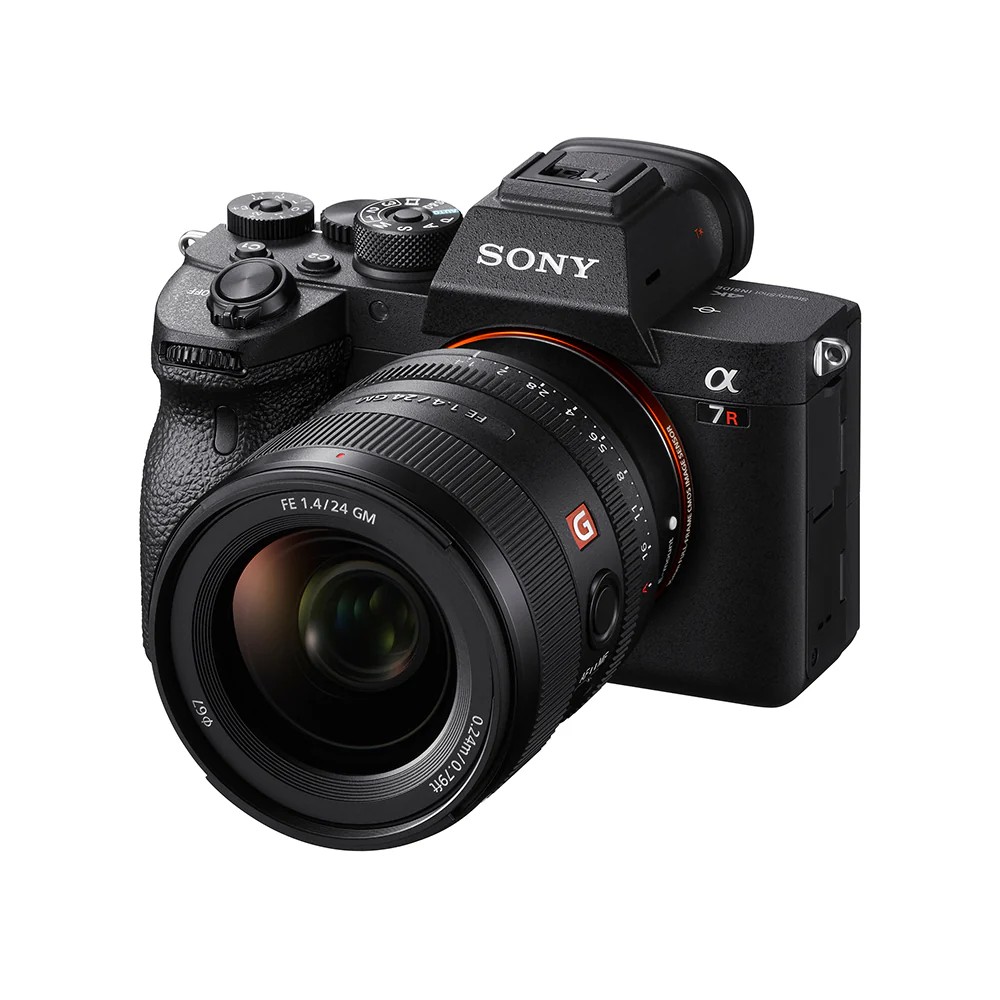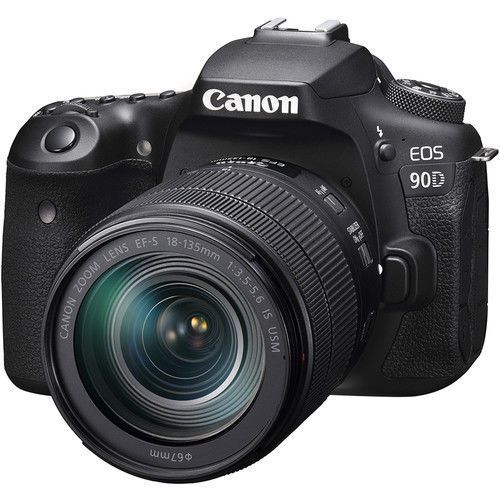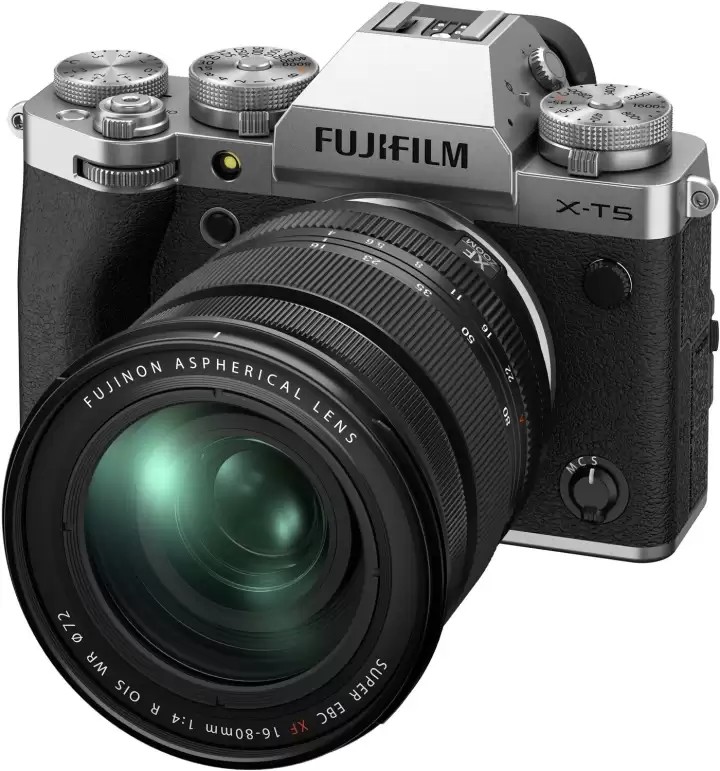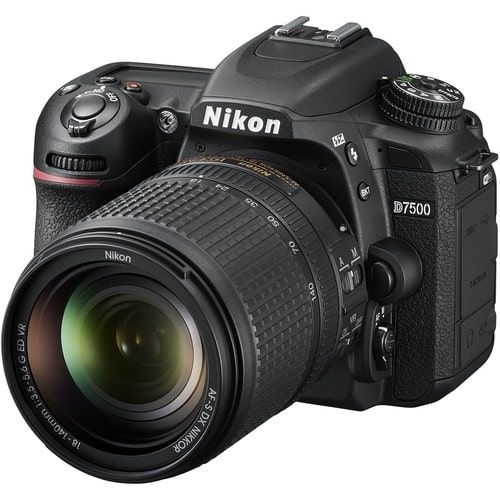Portraiture is an art form that has been practiced for centuries, capturing the essence of human emotion and personality through photography.
In today’s world, portraits are more popular than ever, with social media platforms like Instagram and Facebook encouraging people to share their best shots with the world.
But capturing a great portrait requires more than just a captivating subject.
The equipment you use can make a big difference in the quality of your photos, particularly when it comes to cameras.
With so many options on the market, it can be challenging to determine which camera is best for portrait photography.
Factors such as image quality, autofocus capabilities, and lens selection can all play a role in making the right choice.
Whether you’re a professional or amateur portrait photographer, finding the right camera can be tricky.
After years of capturing portraits, I’ve used some of the best (and also some of the worst) cameras on the market.
Whilst there is some incredible competition, I managed to narrow it down to the top five for portrait photography.
To help others navigate the labyrinth of portrait cameras, I have reviewed each of the five.
If you’re a professional photographer looking to upgrade your gear, this will help you select your next portrait companion.
If you’re an an amateur looking to take your portrait photography to the next level, there is no doubt you’ll find
These reviews will give you a closer look at the best cameras for portraits, examining the features and capabilities of each to help you make an informed decision.
Better yet, I have included a guide to help you buy the best camera for portraits.
Not all cameras are equal and each photographer has different wants and needs.
This guide will help you decide which features are a priority.
So read on to find the camera that is the one for you.
Best Cameras for Portraits – Reviews
Portrait photography is a unique art form that requires the right equipment to capture the essence of the subject.
We’ll explore the best cameras for portraits on the market for portrait photography.
Sony Alpha 7R IV – Best Camera for Portraits Overall

The Sony Alpha 7R IV is a popular choice among portrait photographers for its excellent image quality and impressive autofocus system.
With a 61-megapixel full-frame sensor, this camera can capture incredible detail, making it ideal for portrait shots where fine features and textures matter.
The autofocus system is also one of the best on the market, with 567 phase-detection autofocus points that cover 74% of the frame.
This means that the camera can quickly and accurately focus on the subject, even in low-light conditions, producing sharp and well-defined portraits.
The Sony Alpha 7R IV also offers a variety of customizable settings, allowing photographers to fine-tune the camera to their specific needs.
This versatility is combined with the camera’s lightweight and compact design.
This makes it an excellent choice for portrait photographers who need a camera that is easy to handle and use for extended periods.
Lenses – This mirrorless camera is compatible with Sony’s extensive selection of incredible lenses. This includes Sony’s 135mm lens which is one of the best for portrait photography.
Auto Focus – Features autofocusing technology that is one of the best on the market. It has autofocus points that cover the majority of the frame allowing you to capture sharp and detailed portraits.
ISO Range – Native ISO of 100 to 32000 extending to 102,400. Captures detailed images with limited noise at high ISO.
Exposure Compensation – Easy access exposure compensation dial to adjust the brightness in difficult lighting conditions.
Image Stabilization – Powerful in-built image stabilization that performs incredibly well.
Shutter Speed – Maximum shutter speed of 1/8000 sec. This is great for capturing portraits of subjects in motion such as kids.
Overall, the Sony Alpha 7R IV is an outstanding camera for portrait photography.
It offers superb image quality, reliable autofocus, and a range of customizable settings that make it a great tool for capturing stunning portraits.
This Alpha 7R IV certainly impressed me and stood out above the rest.
“The only issue I have with the Sony Alpha 7R IV is that Sony lenses are some of the most expensive on the market. Regardless, of all five cameras, I found it to be the best overall for portrait photography.”
Nikon D3500 – Best Camera for Portraits for Affordability

The Nikon D3500 is a perfect camera for those who want to take stunning portraits without breaking the bank.
It comes with a 24-megapixel sensor that can capture a ton of detail and produce sharp and vibrant portraits that stand out from the crowd.
One of the best features of the Nikon D3500 is its compact and lightweight design, making it easy to handle and carry around for extended periods.
The camera also has a user-friendly interface, making it perfect for beginners who want to learn the ropes of portrait photography.
Another standout feature is its excellent battery life, which can last for up to 1550 shots, so you don’t have to worry about running out of power while you’re in the middle of a shoot.
Lenses – Features a Nikon F Mount to host Nikon’s great lens selection. The Nikon 85mm is a firm favorite with portrait photographers.
Auto Focus – Dedicated focus mode to help you capture crisp, clear images without blur quickly and easily.
ISO Range – Native ISO of 100 to 25,600. Captures sharp images in low lighting.
Exposure Compensation – Exposure mode alters shutter speed and aperture for optimal exposure.
Image Stabilization – This camera does not have built-in image stabilization. However, many of the Nikon interchangeable lenses do offer this feature.
Shutter Speed – Fastest speed is 1/4000.
The Nikon D3500 is an excellent camera for portrait photography, providing fantastic image quality, easy handling, and user-friendly features.
This makes it perfect for both beginners and seasoned photographers.
It’s a great investment that won’t disappoint and won’t break the bank.
“For the price point, I found the Nikon D3500 to be exceptional. It is an incredible option if you’re looking for a great portrait camera on a budget.”
Canon EOS 90D – Best Camera for Portraits for Action Shots

If you’re looking for a camera that can take your portrait photography to the next level, then the Canon EOS 90D is an excellent choice.
With a 32.5-megapixel sensor and an advanced autofocus system, this camera can capture stunning portraits with incredible detail and accuracy.
One of the highlights of the Canon EOS 90D is its fast and reliable autofocus system, which uses 45 cross-type autofocus points that cover a wide area of the frame.
This means you can quickly and easily focus on your subject, even if they’re moving around, ensuring that your portraits come out sharp and well-defined.
The camera also has a high-speed continuous shooting mode, which allows you to capture multiple shots in quick succession.
This makes it perfect for capturing those perfect moments during a portrait session.
Lenses – Highly versatile range of lenses to capture close-up and distant portraits.
Auto Focus – High-speed auto focus system. The focusing works extremely well and ensures blur is eliminated.
ISO Range – Native ISO of 100 to 25,600 offers good low light performance.
Exposure Compensation – Great exposure adjustments allow for optical light capturing. This makes it easy to shoot detailed images in challenging conditions at both ends of the spectrum.
Image Stabilization – Offers digital image stabilization rather than optical. I didn’t find it to work very well.
Shutter Speed – Maximum 1/16000. This is exceptional and helps to capture great moving imagery.
The Canon EOS 90D is a fantastic camera for portrait photography.
If you’re serious about portrait photography, then the Canon EOS 90D is a must-have camera.
This camera is great for shooting portraits on the move.
With fast autofocus, high-speed continuous shooting mode and an incredibly fast shutter speed, it is the best for action shots.
This includes capturing children and pets who are constantly in motion.
It also allows you to capture beautiful moments without needing to pause.
The only downside I discovered to capturing action portraits is that the image stabilization on the EOS 90D is poor.
Using digital rather than optical image stabilization, I found the image stabilization to be ineffective.
Regardless, this is a camera that will take your portraits to the next level and the EOS 90D is an impressive choice.
“Using digital rather than optical image stabilization, I found the image stabilization to be ineffective. Regardless, this is a camera that will take your portraits to the next level and the Canon EOS 90D is an impressive choice.”
Fujifilm X-T5 – Best Camera for Portraits for Shooting on the Go

The Fujifilm X-T5 is an excellent camera for portrait photography due to its impressive image quality, versatile features and user-friendly design.
This camera offers a 26.1-megapixel APS-C X-Trans CMOS 4 sensor and an X-Processor 4 image processor. They work together to produce stunningly sharp, detailed, and vibrant images.
The Fujifilm X-T5 has an advanced autofocus system which includes face and eye detection technology. This means that the camera can quickly and accurately lock onto the subject’s face and eyes, resulting in sharp and well-focused portraits.
Additionally, the camera has a fast and accurate continuous shooting speed of up to 20 frames per second, which makes it easy to capture the perfect moment.
The Fujifilm X-T5 also has a range of features that make it ideal for portrait photography.
These include a variety of film simulation modes that allow you to create a range of moods and styles.
It also features a tilting touchscreen LCD that makes it easy to frame and compose shots from different angles.
Lenses – Features a Fujifilm X mount that is compatible with Fujifilm XF lenses. The 18-200mm lens is a great zoom option that is popular for portrait photography.
Auto Focus – Great autofocus system with advanced technology as well as face and eye detection. This is excellent for capturing portraits.
ISO Range – Extended ISO range of 64 to 51,200 that has limited image noise at high ISO.
Exposure Compensation – Exposure dial can be extended to +/- 5. This is one of the few cameras on the market that has extended exposure settings above +/- 3.
Image Stabilization – Works well to capture sharp images in low light conditions.
Shutter Speed – 1/8000 which is great for capturing moments as they happen.
Overall, the Fujifilm X-T5 is an excellent camera for portrait photography that offers exceptional image quality, advanced autofocus, and a range of useful features that will help you capture stunning portraits with ease.
“The only negative I found whilst using the Fujifilm X-T5 is that the touchscreen functions tend to lag. However, with its compact size, I found it incredible for capturing beautiful moments on the go.”
Nikon D7500 – Best Camera for Portraits for Versatility

For portrait photography, the Nikon D7500 is a top-performing camera.
With exceptional image quality, versatile features and an easy-to-use design it delivers stunning portraits with ease.
It’s an ideal choice for both professional photographers and amateur enthusiasts.
The Nikon D7500 stands out for portrait photography thanks to its advanced autofocus system that includes 51 focus points and subject tracking technology.
This feature allows for quick and precise focusing on the subject’s eyes and face, resulting in sharp and well-defined portraits.
Lenses – Compatible with Nikon’s range of impressive lenses including the budget-friendly 55-200mm. This lens offers great value for money and incredible zoom capabilities to capture portraits at a distance.
Auto Focus – One of the best auto focus systems on the market.
ISO Range – The camera’s impressive ISO range of 100-51,200 enables shooting in low-light conditions without compromising image quality.
Exposure Compensation – Not the most effective exposure compensation settings but the great ISO range makes up for this.
Image Stabilization – Uses lens stabilization rather than built-in stabilization. The majority of Nikon lenses have this feature.
Shutter Speed – 1/8000 which is about average for cameras currently on the market.
The Nikon D7500 is a superb camera for portrait photography that offers advanced features, precision focus, and creative customization options.
With the Nikon D7500, you’ll have the tools you need to bring your portraits to life and create images that you’ll treasure for years to come.
“Whether you’re shooting in the studio or outdoors, the Nikon D7500 has outstanding image quality and versatility will allow you to capture beautiful portraits that convey your artistic vision.”
How To Buy the Best Camera for Portraits
When choosing a camera for photography, there are several factors to consider to ensure that you get the best quality images.
Some of the most important factors to consider help to capture more detail and highlight the subject.
Overall, it’s important to consider your photography needs and budget when choosing the best camera for you.
Lenses
Interchangeable lenses are essential for portrait photography because they give photographers the ability to choose the perfect lens for a particular shot.
Different lenses offer varying focal lengths, apertures, and other characteristics that can dramatically impact the final image.
One of the most important factors for portrait photography is the aperture, which controls the depth of field in an image.
A wide aperture, such as f/1.8 or f/2.8, creates a shallow depth of field, which helps to blur the background and draw attention to the subject.
This effect can be especially important in portrait photography, where the subject is the main focus of the image.
Another important factor is the focal length of the lens.
A shorter focal length, such as 35mm, creates a wider field of view, which can be useful for capturing more of the environment around the subject.
A longer focal length, such as 85mm or 105mm, creates a narrower field of view, which can help to isolate the subject and create a more intimate portrait.
In addition to aperture and focal length, different lenses also have different bokeh characteristics, which can impact the overall look and feel of the image.
Bokeh refers to the quality of the out-of-focus areas in an image, and some lenses are known for producing smoother or more pleasing bokeh than others.
Overall, the ability to switch between lenses gives portrait photographers the flexibility to choose the perfect lens for each shot and create images that are truly unique and impactful.
All of the cameras reviewed offer an impressive selection of lens options.
Auto Focus
Good autofocus is crucial for portrait photography because it ensures that the subject’s face is crisp, clear and detailed.
The greatest autofocus systems feature eye tracking that locks onto the subject’s eyes putting them in sharp focus.
This is essential for creating a captivating portrait.
When the subject’s eyes are not in focus, the image can look blurry or out of focus, which detracts from the overall impact of the photograph.
In portrait photography, the eyes are often the focal point of the image, and they can convey a lot of emotion and depth.
When the eyes are in sharp focus, they draw the viewer’s attention and help to create a strong connection between the subject and the viewer.
Additionally, good autofocus can help to capture fleeting moments and expressions that may be difficult to capture manually.
Portraits often require the photographer to capture a specific moment or emotion, and good autofocus can help to ensure that the moment is captured with precision and accuracy.
Finally, good autofocus can help to speed up the shooting process and allow photographers to focus on the creative aspects of their work.
By eliminating the need to manually focus on each shot, photographers can focus their attention on other elements.
Good autofocus is a crucial tool for portrait photographers ensuring that the image captures the intended moment and emotion.
ISO Range
ISO range is important for portrait photography because it determines the camera’s sensitivity to light, and can have a significant impact on the final image.
A camera’s ISO range allows photographers to adjust the camera’s sensitivity to light, which can help to capture images in low light conditions or achieve a specific look or effect.
In portrait photography, the ISO range can be especially important when shooting in low light conditions or when working with natural light.
When shooting indoors or in low light conditions, increasing the ISO can help to capture more detail and reduce the amount of noise or grain in the image.
This can be important for capturing subtle details or creating a soft, dreamy look.
However, increasing the ISO can also introduce unwanted noise or grain in the image, which can detract from the overall quality of the image.
It’s important to choose a camera with a wide ISO range and good noise performance to ensure that the image quality remains high even when shooting at higher ISO values.
Additionally, a wider ISO range can offer more flexibility when shooting in changing lighting conditions.
For example, when shooting outdoors, the available light can change quickly as the sun moves or as clouds pass overhead.
A wide ISO range can help to ensure that the photographer is able to capture the perfect shot, even as the lighting conditions change.
Overall, a wide ISO range is an important tool for portrait photographers, as it can help to capture images in low light conditions.
It can help create a specific look or effect, and offer flexibility when shooting in changing lighting conditions.
Exposure Compensation
Exposure compensation is important for portrait photography because it allows photographers to quickly and easily adjust the brightness of their images.
This can be useful when working with changing lighting conditions or when trying to achieve a specific look or effect.
By increasing or decreasing the exposure compensation, photographers can brighten or darken the image.
It can also bring out the subject’s features, or create a specific mood or atmosphere.
Exposure compensation that works well is a valuable tool for portrait photographers who want to have more control over their images.
Image Stabilization
Image stabilization is important for portrait photography because it helps to minimize camera shake and produce sharper images.
When shooting portraits, photographers often use longer focal lengths or slower shutter speeds, which can increase the risk of camera shake and produce blurry images.
Image stabilization helps to counteract this by stabilizing the camera and reducing the effects of camera shake.
This can be especially useful when shooting handheld or in low light conditions, where camera shake is more likely to occur.
By producing sharper, more detailed images, image stabilization can help to create more impactful and professional-looking portraits.
Not all cameras have built-in image stabilization.
It is also worth considering that optical image stabilization works better than digital.
Shutter Speed
Shutter speed is important for portrait photography because it controls the amount of time that the camera’s sensor is exposed to light.
This can have a significant impact on the final image.
A faster shutter speed can freeze motion and produce sharper images, which can be useful when photographing moving subjects or capturing subtle details.
A slower shutter speed, on the other hand, can create a sense of motion or blur, which can be useful when trying to create a specific mood or atmosphere.
By controlling the shutter speed, photographers can have more control over the final image and create more impactful portraits.
A camera with a varied shutter speed should be highly considered when looking to buy a camera for portrait photography.
Best Camera for Portraits – My Verdict
On the whole, choosing a camera for portrait photography is open to personal preference.
Every portrait photographer, whether amateur or professional, will have their own wants and needs in a camera.
It is crucial to weigh up the features to look for in how to buy the best for portrait photography and decide on your priorities.
Ultimately, after testing all five cameras, I found the Sony Alpha 7R IV to be the best camera for portrait photography.
Capturing incredible images with sensational autofocus and impressive low light performance, it was easily the standout for me.
Sony Alpha 7R IV – Best Camera for Portraits Overall

The only downside is that I find Sony lenses to be very expensive in comparison to other makes.
For greater affordability, the Nikon D3500 is a great choice.
If however, you are on the go a lot and capturing portraits on the move like me, the Fujifilm X-T5 is lightweight and compact.
To capture the perfect moment as it happens, particularly of children, I think the Canon EOS 90D is hard to beat.
Alternatively, for great versatility and flexibility in your shots, the Nikon D7500 is a star.
Whichever camera you go for from these five, you are guaranteed to phenomenal image quality and exquisite photographs.

